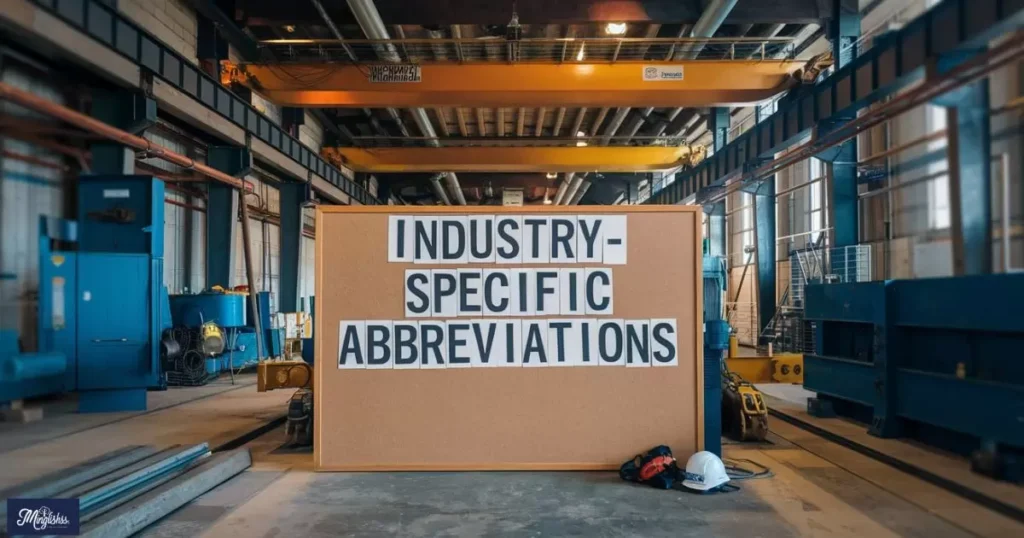In today’s fast-paced world, abbreviations are more than just a convenience; they are essential tools that help us communicate quickly and effectively.
Whether you’re in the field of education, technology, manufacturing, or any other industry, you’ve probably come across the word “Assembly” and wondered how to abbreviate it correctly.
This guide is designed to help you understand the various abbreviations for “Assembly” used in different contexts, ensuring that your communication is both accurate and professional.
As you continue reading, you’ll discover the common and less-known abbreviations for “Assembly,” along with examples of how they are used in different settings.
This guide will empower you with the knowledge you need to choose the right abbreviation, saving you time and avoiding confusion in your written communications.
So, if you’re ready to sharpen your communication skills and avoid the pitfalls of improper abbreviations, let’s dive into the specifics.
You’ll find this guide packed with practical examples, ensuring that you can apply what you learn directly to your work or studies. Keep reading to become an abbreviation expert in no time!
Common Abbreviations for Assembly
There are several common abbreviations for “Assembly,” each suited to different contexts. The most widely used abbreviations include “Assem.”, “Assy.”, and “ASM.”
- “Assem.” is often used in formal documents and educational settings where a slightly longer abbreviation is acceptable.
- “Assy.” is popular in the manufacturing and engineering sectors, where brevity is crucial.
- “ASM.” is sometimes seen in technical fields, particularly in engineering drawings and specifications.
Understanding these variations helps you select the right abbreviation based on your audience and the formality of the document.
Industry-Specific Abbreviations

Different industries have developed their own abbreviations for “Assembly,” tailored to the specific needs of their communication. In the manufacturing industry, for example, “Assy.” is commonly used on production lines, where workers need quick and clear instructions.
In the software development sector, “ASM.” might be preferred, particularly when referring to assembly language. The education sector, on the other hand, may use “Assem.” when referring to school assemblies or similar gatherings. Knowing the industry-specific abbreviation helps ensure that your communication aligns with professional standards in your field.
Abbreviations in Technical Documents
Technical documents often require precise language, and abbreviations are no exception. In manuals, blueprints, and project plans, “Assembly” is typically abbreviated as “Assy.” or “ASM.” The key here is consistency: once you choose an abbreviation, use it consistently throughout the document to avoid confusion.
For example, if you’re drafting a technical manual for a machine, you might write, “Refer to the Assy. section for detailed instructions.” This not only saves space but also ensures that the document is clear and easy to follow.
Understanding Measurements: The Abbreviation for Quart
When Not to Abbreviate Assembly
While abbreviations can be incredibly useful, there are times when they should be avoided. In formal writing, such as business reports or legal documents, it’s often better to spell out “Assembly” in full to ensure clarity.
For instance, in a legal contract, you might write, “The Assembly of the components must be completed by the specified deadline.” In such contexts, using the full term eliminates any potential ambiguity and maintains a formal tone. Overusing abbreviations, particularly in formal or complex documents, can lead to misunderstandings, so it’s essential to know when to use them and when to avoid them.
What Is the Most Common Abbreviation for Assembly and When Should It Be Used?

The most common abbreviation for “Assembly” is “Assy.” It’s widely accepted in both technical and informal contexts. However, the choice to use this abbreviation depends on the document’s audience and purpose. In highly formal documents, it might be better to spell out “Assembly” in full, while in technical blueprints or manufacturing instructions, “Assy.” is perfectly acceptable. This helps ensure that your writing is both professional and easy to understand.
Use in Example Sentences
Full
- The Assembly of the new product line will begin next week.
- Our team is responsible for the Assembly of the annual report.
- The Assembly process requires strict adherence to safety protocols.
- We attended the Assembly to discuss the new company policies.
- The final Assembly took longer than anticipated due to technical issues.
Abbreviation
- The Assy. of the new product line will begin next week.
- Our team is responsible for the Assy. of the annual report.
- The Assy. process requires strict adherence to safety protocols.
- We attended the Assy. to discuss the new company policies.
- The final Assy. took longer than anticipated due to technical issues.
Conclusion
Understanding the correct abbreviation for “Assembly” is essential for clear and effective communication, especially in technical and industry-specific contexts.
By familiarizing yourself with the most common abbreviations, their appropriate usage, and the scenarios where spelling out the word might be necessary, you can ensure that your writing is both professional and easy to understand.
Whether you’re drafting a technical document, writing an email, or creating a project plan, this guide provides the tools you need to use abbreviations confidently and correctly.
Keep this guide handy as a quick reference to help you navigate the sometimes tricky world of abbreviations with ease.

Hi, I’m Isabel: I’m passionate about turning language learning into a fun adventure. I believe in making every word exciting and memorable.










